[This is a behind the scenes post describing the project in english. <<Links>> to original content in spanish will be provided in this piece to direct judges to our most compelling and comprehensive content on this project]

March is the end of the high summer holidays season in Argentina. Therefore, many locals were still abroad at the time when President Fernández declared quarantine and closed borders and air space two weeks after the first case of COVID-19 was confirmed in the country. One of the most controversial measures was the restriction of foreign flights. Only a few flights from the national airline were enabled.
This initiated the drama of the 21.493 Argentines who were now stranded in different continents around the world.
Society was divided. While many empathize with the stranded abroad, others criticized them alleging that if they had money to go on vacation, they should be able to stay abroad and that the government was doing the right thing by preventing them from “bringing the virus” from countries where the pandemic was most developed.
In Argentina, the lockdown was so strict that somes international airlines arrived to bring back their nationals and couldn’t bring argentineans that were waiting in the departing airports. They flew empty towards our country. It was devastating.
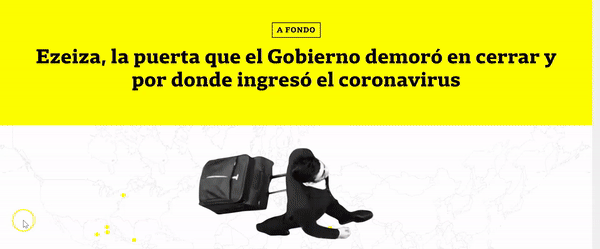
Foreign Minister has expressed his commitment to all Argentines to return but the Minister of Health established a limit of 600 people per day entering our country through the international airport. Three months later there are still thousands who have not been able to come back.
2) Description
Attending the humanitarian situation, LA NACION made this reporting an editorial priority.
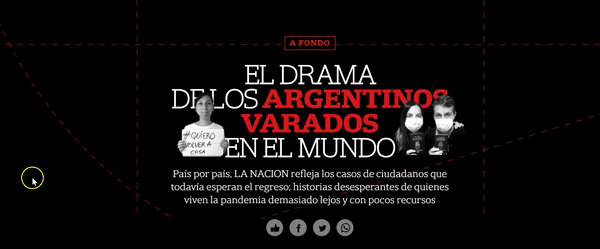
<<Click for our most comprehensive multimedia package on Stranded Abroad>>
We released five special multimedia packages with maps, infographics, video testimonies, photos and a podcast episode. We also published more than <<140 personal stories under the tag: Stranded Abroad>>.
The situation gets worse if one takes into account the economical situation of the country, 1 US dollar is the equivalent to 140 argentine pesos, and argentines must pay 30% tax over the official currency exchange price for each purchase they make abroad. The extraordinary expenses and new tickets bought in a desperate attempt to return home by other airlines, led thousands to situations of insolvency, homelessness and in some cases, life danger. Most of them lost the return tickets.
Stories ranged from people with chronic illnesses that could not access medication, others eating once a day thanks to charity and some few even sold even their phones and personal belongings in order to get a place to sleep.
Please find below some individual stories highlights.
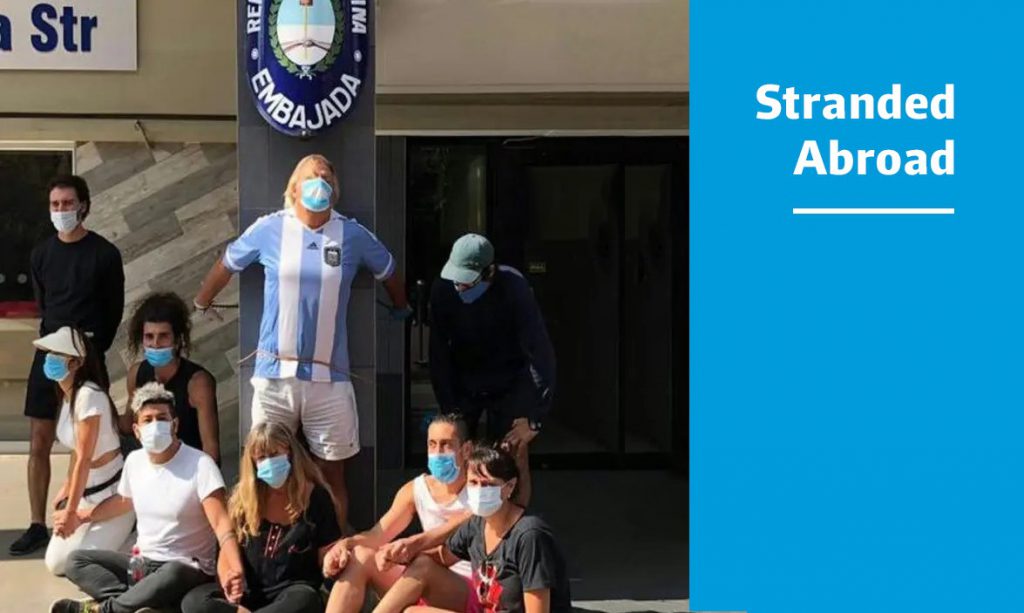
Stranded in South Africa chained himself to Argentina’s Embassy demanding a humanitarian flight.
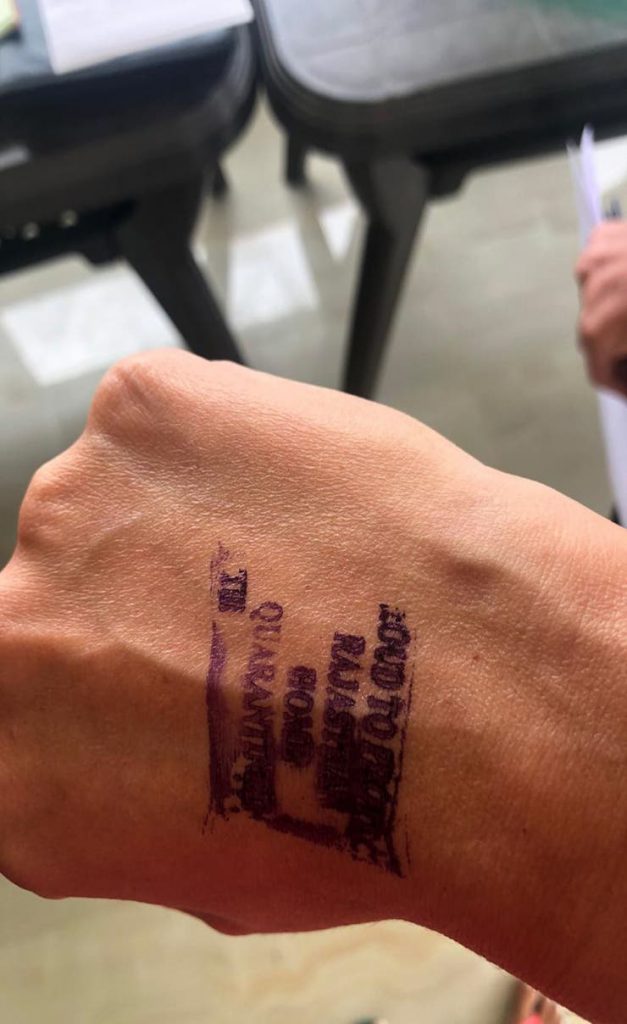
Stranded in India got a stamp in their forearms and ordered to stay out of sight. Some couldn’t pay their stay with credit cards while running out of rupees.
In the Philippines, they got robbed during the night by small kids who were sent to steal their belongings.
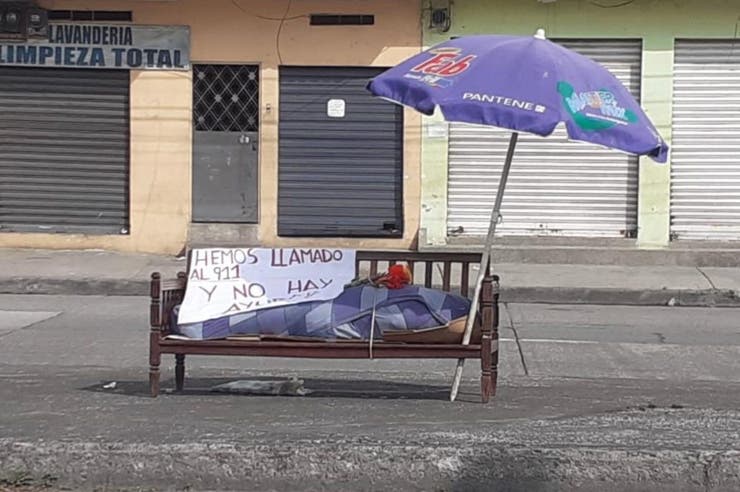
In Ecuador they lived meters away from corpses left in the streets of Guayaquil by the dead’s family because the government could not attend all the services required.
3) Strategy and impact –
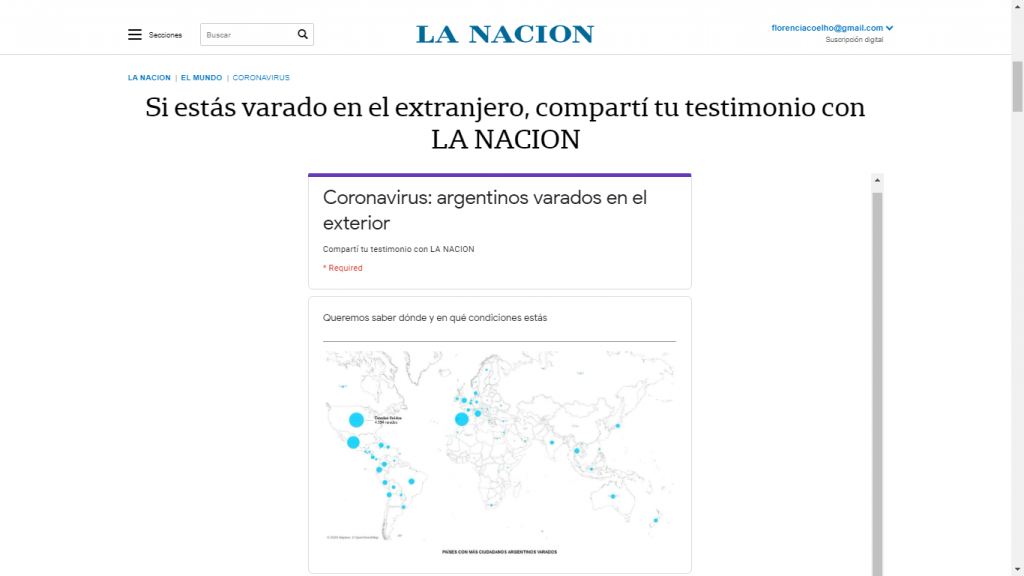
We established different methods to reach out to our citizens. We created Google Forms crowdsourcing information like location, age and vulnerability situation. We launched this initiative from our Lanacion.com homepage and social media channels. The answers started to arrive
But the most effective strategy was to search for and find more than 50 Instagram accounts where the stranded gathered relating to country or big cities around the world.
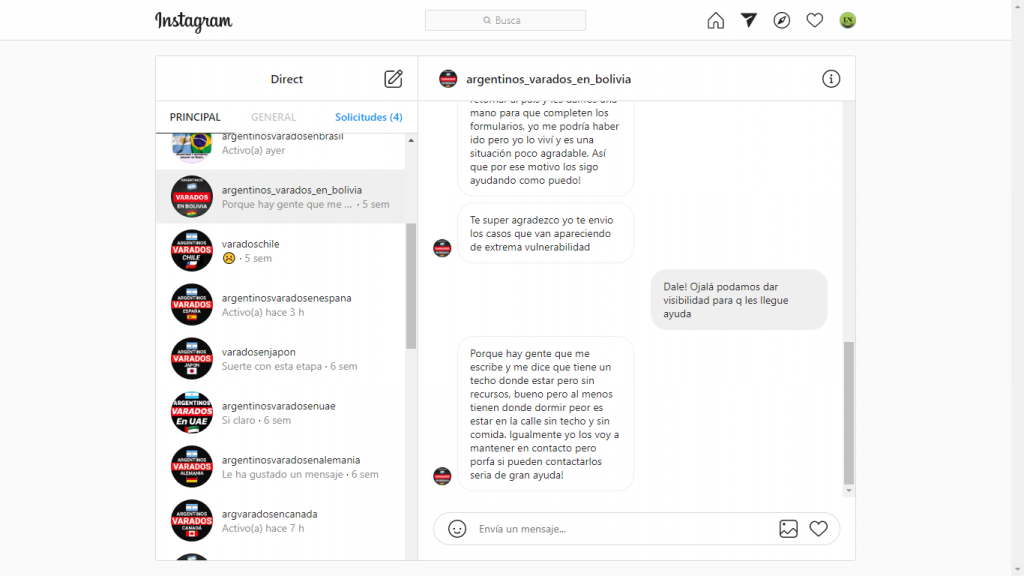
As a result of the collected data we were able to create a database from scratch that accumulated over 2000 cases.
The data journalism team processed the structured database that allowed us to quickly detect the most vulnerable situations, age, exotic destinations, by countries, etc.
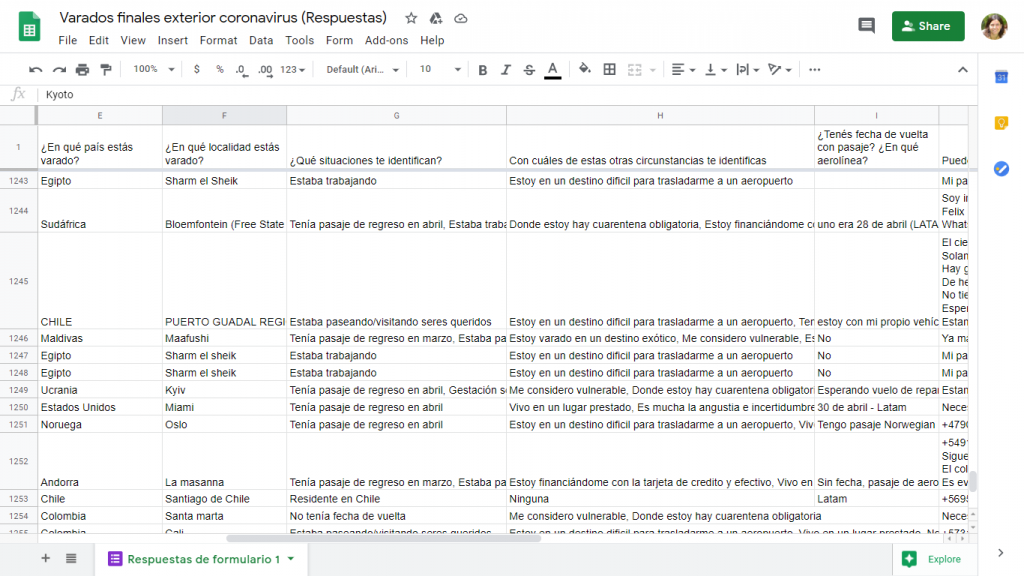
The initial conversations with the different geolocated groups were handled via DMs on each group Instagram accounts. We sent them the link to our Form.
Afterwards, the interaction between the team and individual cases continued by mail and Whatsapp converstions.
The use of email was preferred to write to a big group in BCC.
For example, mails were sent with different Subjects: Stranded in Spain, Stranded with Hunger, Stranded with Health Issues, Stranded in Africa, etc.
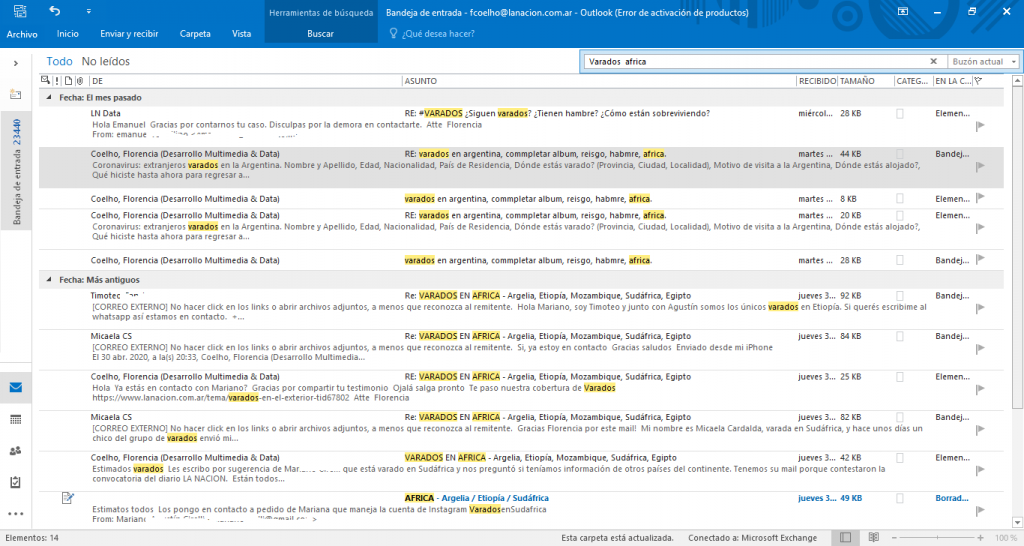
For making these group focus, we extracted the information using different filters from the database, sent the mail to more up to 100 people and then continue via Whatsapp with the ones answering the mail.
Whatsapp is the favorite means of communication in Argentina and was the best medium to develop a trust bond between a journalist and a victim. They sent us photos, videos, audios, and we were monitoring until they reached Argentina and got home.
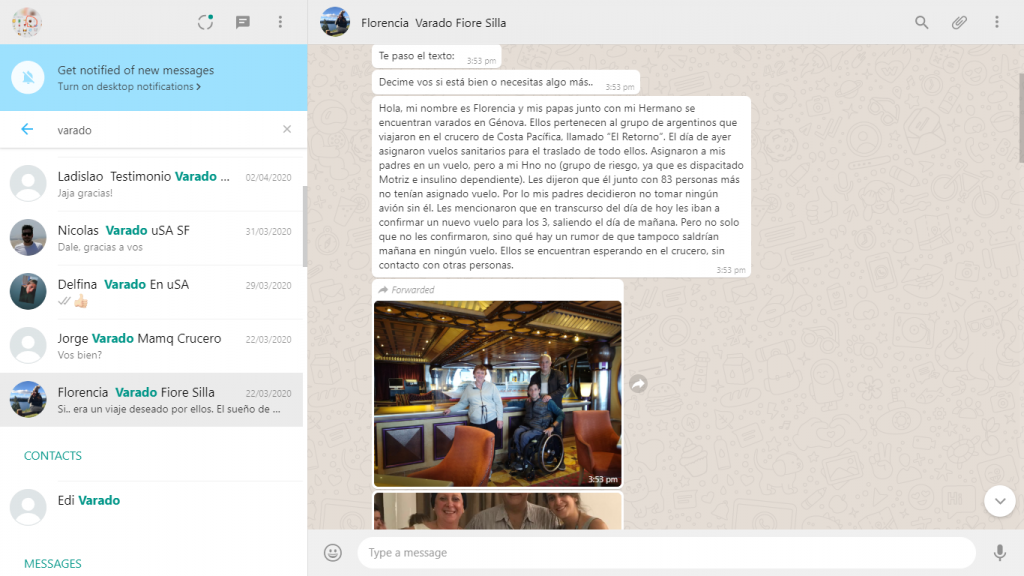
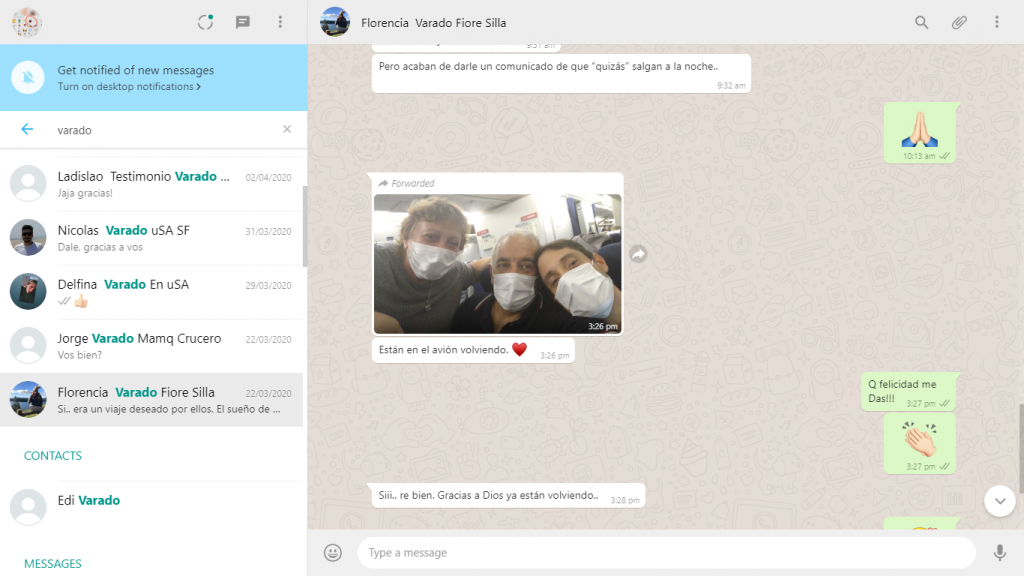
As we published the stories we were flooded with an immense response of gratitude. They even republished in Instagram their accounts.
We sent new mails checking if they could return or what were they actual situation after our first contact. That allowed us to update our database with all the answers confirming they return to Argentina, or moving between countries or change in vulnerable situation.
The comprehensive coverage and the use of crowdsourcing allowed us to interact closely with our audience.
We did not only cover the stories of those stranded abroad but also those who were stranded in Argentina, when their residence was in another country but couldn’t fly because of air space shut down.
The impact on our readers was immediate including locals who offered home or supplies to foreign people stranded in Argentina, helping communicate stranded between each other in cities without Instagram accounts and calling Governmnent almost everyday pointing to most vulnerable cases and watchdog of aid given.
4) Technology used
We used Google Forms to create a database from scratch, also Instagram Direct Messages, email and Whatsapp for the crowdsourcing process.
Special projects frontend was developed in Javascript using vue.js as the main framework. For the content management, an own development was used that uses Google Docs as a platform for loading the interactive elements (texts, photos, videos, etc.) and Archie ML (an open source development from the New York Times) as Markup Language.
5) Number of people involved in the project
More than 40 people were involved in the coverage of this topic that was abroaded as an intersectional one, including the data unit, the design team, correspondents and journalists from the society, economy and international sections of LA NACION.
6) Budget
All internal resources.